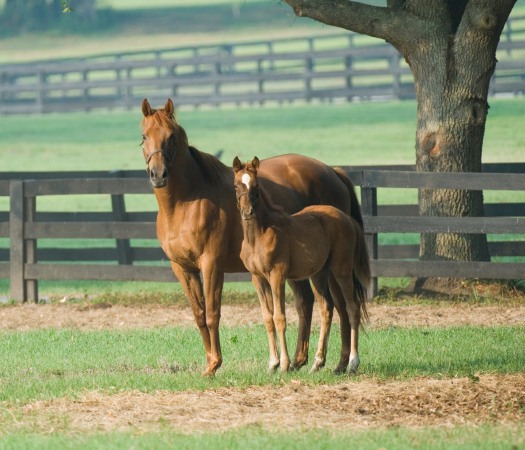Good mare management at this time of year has many advantages;
1.Early foal production and thus a more commercial foal at the foal sales.
2.Considerable savings on livery ,transport and vets fees at the stud.
3.More opportunities to cover the mare if she is proving difficult to get in foal.
4.Healthier mares produce healthier foals.
Barren and maiden mares;(objectives).
1.Have CEM, EVA and EIA tests done as required by the individual studs.(takes one week to get results).
2.Ensure the mare is wormed to date and has had the farrier recently.
3.Mare must be on a rising plane of nutrition.
3.Stimulation by artificial lighting will encourage the mare to cycle much earlier in the Spring.The most effective and practical regime of light stimulation is to have the mare under a light of at least 200 watts on a timer which will turn on at 8am and turn off at 12 at night.This has been proven to be the single most effective means of getting the mare to cycle early.It normally takes 6 to 8 weeks to get a response to artificial lighting.
4.Having the mare rugged will help but be careful not to rug a mare in poor condition as this may lead pressure sores under the rug.
5.Daily exercise will be beneficial especially for mares prone to fluid retention in their uterus.
6.Have your vet examine the mare to assess the condition of the vulva,cervix,uterus and ovaries and treat accordingly.
Pregnant mares;
1.Supervise the foaling to limit any potential trauma to the mare and foal.
2.Have the mare stitched the day after she foals if necessary.
3.Ensure the mare and foal get adequate exercise in the paddock every day.This will help the mare to evacuate any fluid in her uterus.
4.Have the mare examined at the foal heat by your vet to determine if she is dirty and treat if necessary.Most mares at the foal heat are not good subjects to cover as their uterus has not involuted
enough..
5.CEM,EVA and EIA tests may taken at the foal heat examination if required by the stud.
6.Ensure worming and farrier are up to date.


